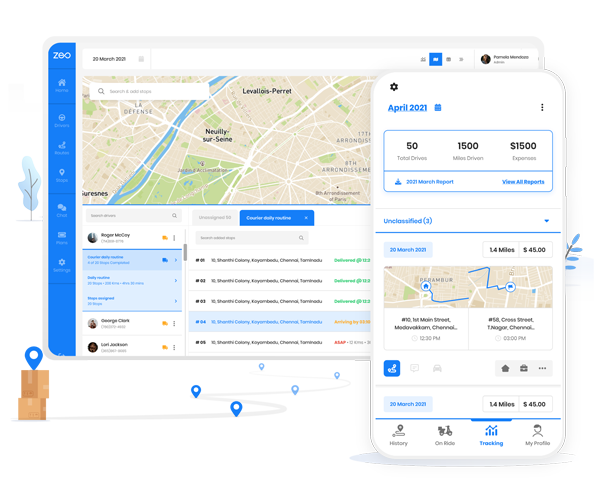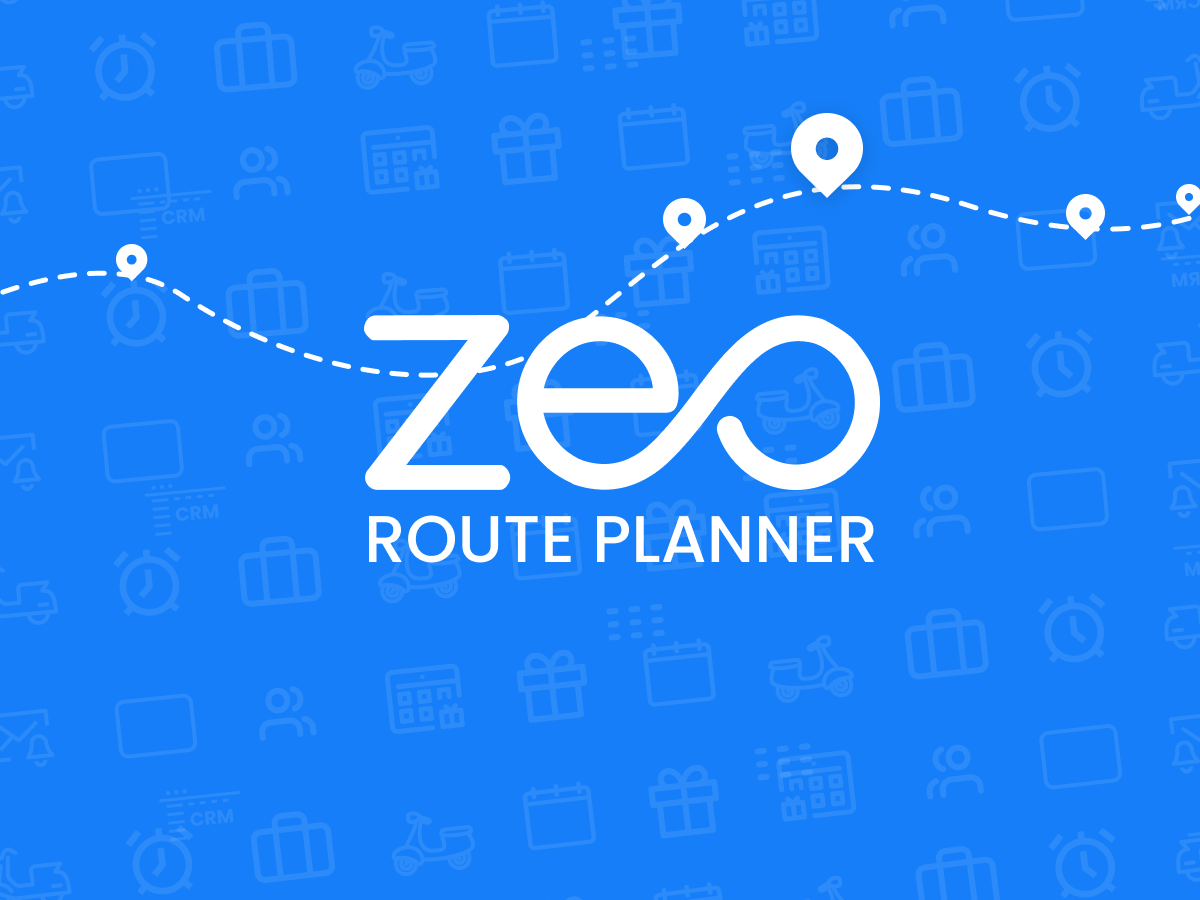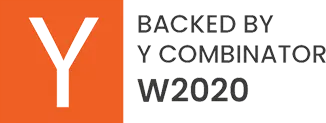Updated on: July 21, 2025
Efficient transportation and logistics are crucial for modern businesses. Picture a delivery company striving to meet tight deadlines or a service provider juggling multiple appointments daily. In such scenarios, the difference between success and chaos often hinges on effective routing and scheduling. These two elements, though closely related, serve distinct purposes in the management of logistics operations. Understanding their differences and how to optimize both is key to achieving operational excellence.
The Fundamental Difference between Routing and Scheduling
Routing and scheduling are both critical aspects of logistics and transportation management, but they serve different purposes and focus on distinct elements of the delivery process:
Routing
Routing refers to the process of determining the most efficient paths or courses for vehicles to follow when delivering goods or providing services. It focuses on the physical paths vehicles will take from point A to point B, considering factors such as distance, traffic conditions, road types, and delivery locations.
Key Points in Routing:
- Path Optimization: Finding the shortest or fastest route to minimize travel time and distance.
- Cost Efficiency: Reducing fuel consumption and operational costs by selecting optimal routes.
- Dynamic Adjustments: Adapting routes in real-time based on traffic updates, road closures, or other unforeseen events.
- Multiple Stops: Managing routes with multiple delivery or service stops to ensure they are arranged in the most efficient order.
Scheduling
Scheduling involves planning when tasks or deliveries should take place. It focuses on the timing and allocation of resources, ensuring that tasks are completed within specific time frames and that resources (such as drivers or vehicles) are efficiently utilized.
Key Points in Scheduling:

increase fuel savings
Hassle Free Deliveries & Pickups!
Optimize routes with our algorithm, reducing travel time and costs efficiently.
Get Started for Free
- Time Management: Allocating specific time slots for deliveries or services to ensure timely completion.
- Resource Allocation: Assigning drivers, vehicles, and other resources to tasks based on availability and capacity.
- Prioritization: Determining the order of tasks based on urgency, customer preferences, or other criteria.
- Coordination: Ensuring that all scheduled activities are aligned and that there are no conflicts or overlaps.
Why Routing and Scheduling Are Important for Businesses
Effective routing and scheduling are crucial for businesses, especially those that rely on logistics and transportation. Here’s why these two elements are essential, with relevant examples to illustrate their importance:
- Cost Efficiency: By optimizing routes, companies can reduce fuel consumption, vehicle wear and tear, and driver hours. For instance, a delivery company that uses Zeo Route Planner for optimizing routing and scheduling can ensure that their vehicles take the shortest or fastest paths, saving on fuel and reducing overall expenses.
- Improved Customer Satisfaction: Timely and accurate deliveries are key to customer satisfaction. Effective scheduling ensures that deliveries are made within the promised time windows, while routing guarantees that the quickest and most efficient paths are taken.
- Enhanced Resource Utilization: Optimal routing and scheduling ensure that all resources, such as vehicles, drivers, and time, are used efficiently. This means fewer resources are wasted, and more deliveries or services can be completed with the same assets.
- Flexibility and Adaptability: Businesses often face unexpected challenges like traffic jams, road closures, or urgent customer requests. Dynamic routing and scheduling allow for real-time adjustments, ensuring that such challenges are managed without significant disruptions.
- Data-Driven Decisions: Advanced routing and scheduling software provides valuable insights and data analytics. Businesses can track performance metrics, identify bottlenecks, and make informed decisions to continually improve their operations.
How to Optimize Routing and Scheduling
Optimizing routing and scheduling is essential for maximizing operational efficiency and reducing costs. Here are some strategies and best practices to achieve optimal routing and scheduling:
- Leverage Advanced Route Planning Software: Utilizing sophisticated route planning software like Zeo Route Planner can significantly enhance your routing and scheduling capabilities. Zeo Route Planner uses algorithms to calculate the most efficient routes based on various factors such as traffic conditions, delivery windows, vehicle capacities, and more.
- Incorporate Real-Time Data: Real-time data integration allows businesses to adjust routes and schedules on the fly based on current conditions such as traffic, weather, and road closures. This dynamic approach helps in mitigating delays and maintaining punctual deliveries. For example, a plumbing company integrates real-time traffic data into Zeo Route Planner, allowing dispatchers to reroute technicians in case of traffic jams, ensuring timely service appointments.
- Analyze Historical Data: Reviewing historical data on delivery times, route efficiency, and customer feedback can provide insights into recurring issues and areas for improvement. This data-driven approach helps in refining routing and scheduling strategies over time.
- Prioritize Based on Delivery Windows: Scheduling deliveries within specified time windows can enhance customer satisfaction and operational efficiency. Prioritizing routes based on these windows ensures that high-priority deliveries are made first. For example, a medical supply company prioritizes deliveries to hospitals and clinics based on their operating hours and urgency, ensuring that critical supplies are delivered within the required time frames.
- Optimize Fleet Utilization: Route planner for fleets ensures effective routing and scheduling so that all vehicles and drivers are utilized to their maximum potential. This includes minimizing idle times, balancing workloads, and planning routes that cover the most ground in the least amount of time.
- Implement Predictive Analytics: Predictive analytics can forecast potential delays and disruptions, allowing businesses to proactively adjust their routes and schedules. This approach helps in minimizing unexpected issues and maintaining smooth operations. For instance, a package delivery service uses predictive analytics through Zeo Route Planner to anticipate weather-related delays, adjusting schedules and routes in advance to avoid affected areas and ensure timely deliveries.
Conclusion – Why Choose Zeo?
Optimizing routing and scheduling is essential for any business that relies on transportation and logistics. By leveraging technology, analyzing data, and prioritizing efficiency, companies can significantly reduce costs, enhance customer satisfaction, and improve overall operational efficiency.
When it comes to choosing the right route planning software, Zeo Route Planner stands out as a top choice. By choosing Zeo Route Planner, you’re not only investing in a tool that optimizes routes and schedules but also in a solution that scales with your business, adapts to your needs, and enhances your ability to deliver exceptional service to your customers.

Are you a fleet owner?
Want to manage your drivers and deliveries easily?
Grow your business effortlessly with Zeo Routes Planner – optimize routes and manage multiple drivers with ease.

increase fuel savings
Hassle Free Deliveries & Pickups!
Optimize routes with our algorithm, reducing travel time and costs efficiently.
Get Started for Free




















